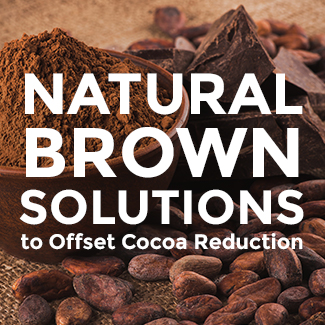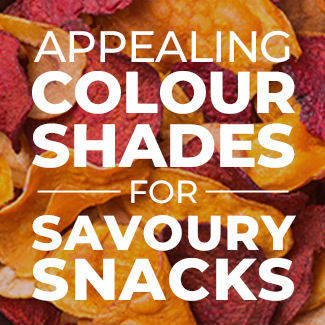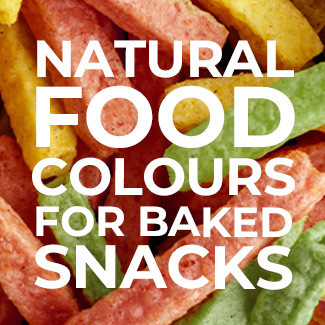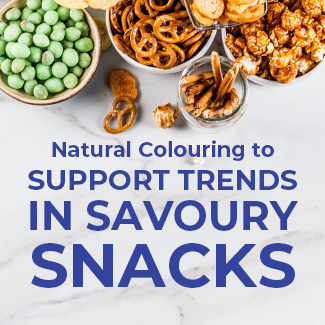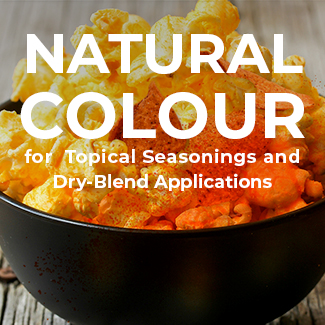Natural Colour for Dips and Spreads
A Growing Market for Dips and Spreads
Turbulent times, both financially and socially, have contributed to a continued rise in consumer in-home dining. Dips and spreads are gaining popularity as accents and amplifiers to snacks, meals, and appetizers.
Dips and savoury spreads offer consumers
culinary flexibility that sparks innovation
Innovating with interesting, trending, functional, or indulgent flavours can help a dip or spread catch consumer attention as interest in the segment grows.
Visually, colour can help tie a flavour profile in and create a cohesive taste experience. When formulating with natural colours in dips and spreads, developers should keep in mind a few key technical considerations.
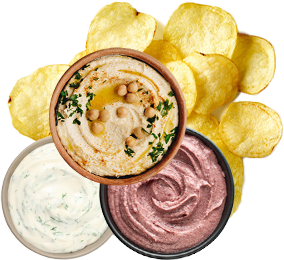
Technical Considerations
Dips and savoury spreads are not only popular, but diverse in offerings and include salsas, cheese dips, creamy dips/ spreads, hummus, guacamole, and meat or bean dips. Most of these will function quite similarly with respect to colour incorporation.
ACIDITY
Acidity of the product is going to be a major factor when considering colour solutions. Some colours thrive in acidic environments, while others prefer more neutral applications. For example, if you are targeting a red hue, anthocyanins will be a great option in low pH projects, while higher pH will demand a solution like beet. In cheese dips, Sensient’s acid-proof annatto offers a wonderful yellow-orange hue that remains stable in low pH environments.
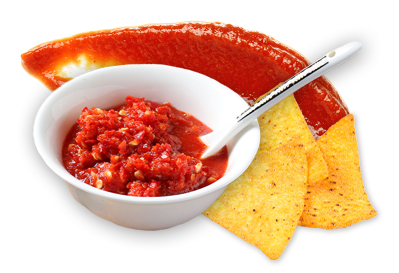
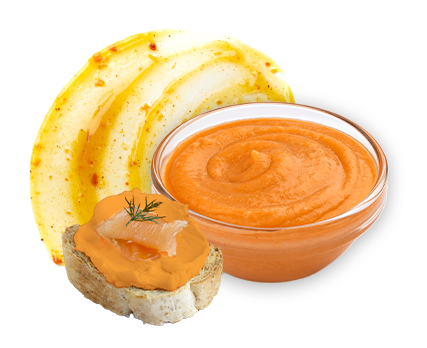
INGREDIENT INTERACTION
Colour ingredients can interact with other ingredients in a recipe, such as emulsions or flavours, in ways that may improve or destabilize their performance. Colour experts can offer guidance on ensuring the success of a colour in the final formula. This is particularly common in dehydrated products where water is added by the consumer, and a recipe needs to be stable both with and without that hydration.
LIGHT EXPOSURE
If a dip or spread is packaged in transparent containers or those with clear windows, as many are, light stability will play a role as well. While almost all colour solutions, both natural and synthetic, are light-stable, a few popular options like turmeric may fade over time under light exposure. Light-stable solutions like beta carotene may be used instead.
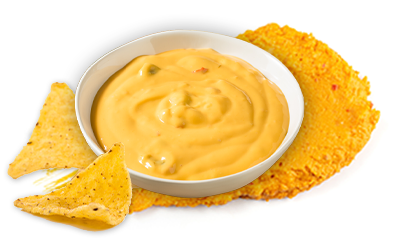
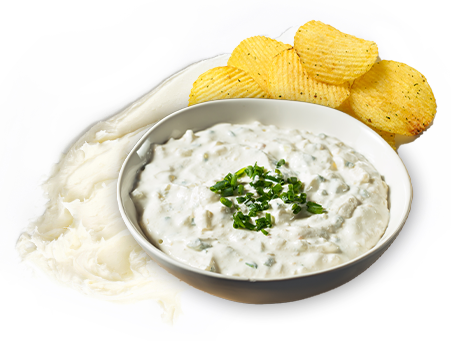
WHITENING AGENTS
Although titanium dioxide has long been the go-to solution for whitening and opacity across almost all food and beverage applications, including dips and spreads like tahini, the ban of E171 as a food additive in Europe continues to keep formulators interested in finding the best possible alternatives on the market. Clean label white solutions like the Avalanche™ portfolio offer developers bright whites for dips and spreads without titanium dioxide.
HEAT PROCESSING
Both maximum temperature and duration of heat processing can impact colour performance. In cream cheeses, a batch may heat for many hours and take a similarly long time to cool down, and any colour used will need to survive that temperature change. Sensient’s extensive knowledge and innovation in the area of heat-stable solutions, like the Uberbeet range, ensures that you can achieve the entire rainbow in dips or spreads with heat steps.
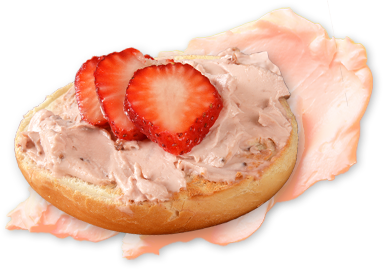
Naturally coloured dips and spreads add a
delicious visual for flavourful snacks and meals.
If you still have any questions about formulating with colour, please reach out! We’d love to help. If you’re ready to jump into development, request a colour sample from our rainbow here!









